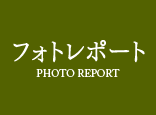| Date and time | Saturday, September 15 13:30 to 16:00 |
| Tour destination | Sankeien Rinshunkaku, Choshukaku, Harukasa Lu (Naka Ward, Yokohama) |
It was still a day when the heat remained, but 35 people participated because they were not worried about the rain.
 Sankeien was released on May 1, 1906 (Meiji 39) by Sankei Hara, a businessman who made a fortune through raw silk trade. In the 175,000m2 garden, historically valuable buildings relocated from Kyoto and Kamakura are skillfully arranged. (Currently, 10 important cultural properties and 3 Tangible Cultural Property buildings designated by Yokohama City)
Sankeien was released on May 1, 1906 (Meiji 39) by Sankei Hara, a businessman who made a fortune through raw silk trade. In the 175,000m2 garden, historically valuable buildings relocated from Kyoto and Kamakura are skillfully arranged. (Currently, 10 important cultural properties and 3 Tangible Cultural Property buildings designated by Yokohama City)
The vast land spread over Honmoku, the southeastern part of Yokohama, overlooking Tokyo Bay, was constructed by Sankei from around 1902 (Meiji 35), and the outer garden was completed in 1914 (Taisho 3) and in 1922 (Taisho 11). During Sankei's life, many works representing modern Japanese painting were born in the park, including Tomonari, Seison Maeda's 'portable shrine'', Taikan Yokoyama's 'Yinin', and Shimomura Kanzan''''. After that, it was severely damaged by the war, and in 1953 (Showa 28), when it was transferred and donated by the Hara family to Yokohama City, the Sankeien Hoshokai was established, and restoration work was carried out to the present. I will continue.
(The facility commentary is reprinted from the Sankeien website.)
This time, we toured the Rinshunkaku, Choshukaku, and Harukasou, which are usually closed to the public.
 |
Rinshunkaku [Designated Important Cultural Property] 1649 (Kei'an 2)
It was said to be the Juraku Dai remain built by Hideyoshi Toyotomi during the Momoyama period, but it is now thought to be the villa Iwade Goten of the Kishu Tokugawa family in Iwade City, Wakayama Prefecture. Inside, you can see the shohekiga centered on Kano school and the delicate and elaborate designs of Sukiya-style Shoin.
 |
In the column at the border of the room, there are elaborate ideas such as wave sculptures (Daiichiya) and colored paper (Dainiya) with waka.
 |
One of the most interesting things is the ranma in the third shop "Tenraku no Ma", where real instruments such as shō and flutes familiar to Gagaku are used.
 |
It seems that there are few opportunities to visit the second floor even when the inside is open to the public. This time, I was able to go up specially and see the calculated superb view in an environment that does not seem to be in the city.
 |
Shushukaku [Important Cultural Property] Architecture in 1623 (Genwa 9)
This building is said to have been built by Tokugawa Iemitsu in Nijo Castle and later by the Kasuga Bureau. The design of each part is rich in originality and change, but it is precisely structured according to the character of Shoin-zukuri Architecture and its function as a teahouse. This building is said to have been created by Samurai Sakuma during the Edo period.
 |
The entrance of the L-shaped one-step lower heater board is imagined as a place where you can row with a boat, and it may have been built at the beginning facing the waterside. It conveys the style of the upper samurai class in the early Edo period.
 |
Momoyama period Architecture
The booth tea room at Sanjodaime is said to be a work of Urakusai Oda.
 |
Haruso Lu was once called "Kumentei" because there are nine windows in the tea room. It is a gorgeous tea room with many windows.
Photography / Shoma Kosai

